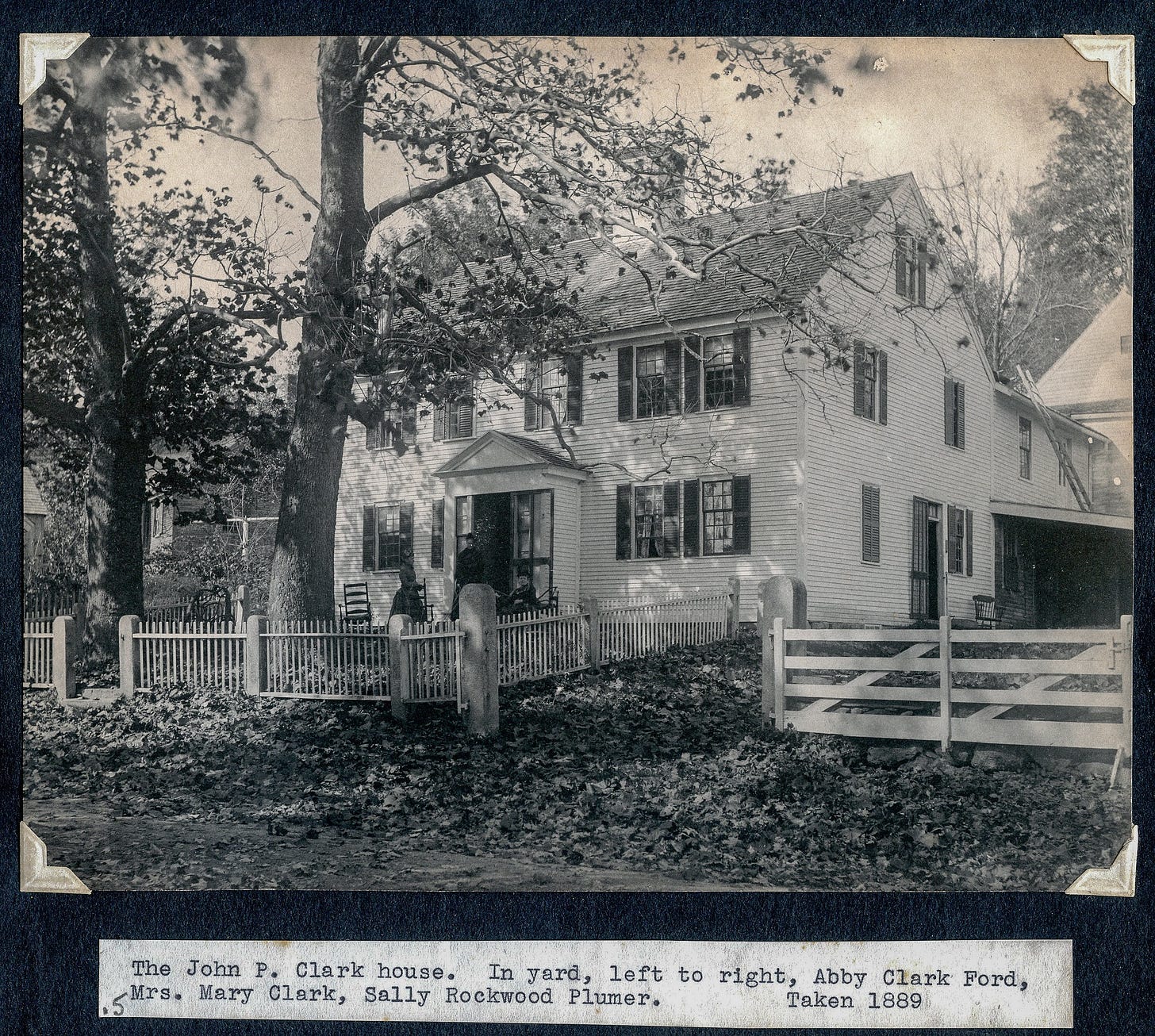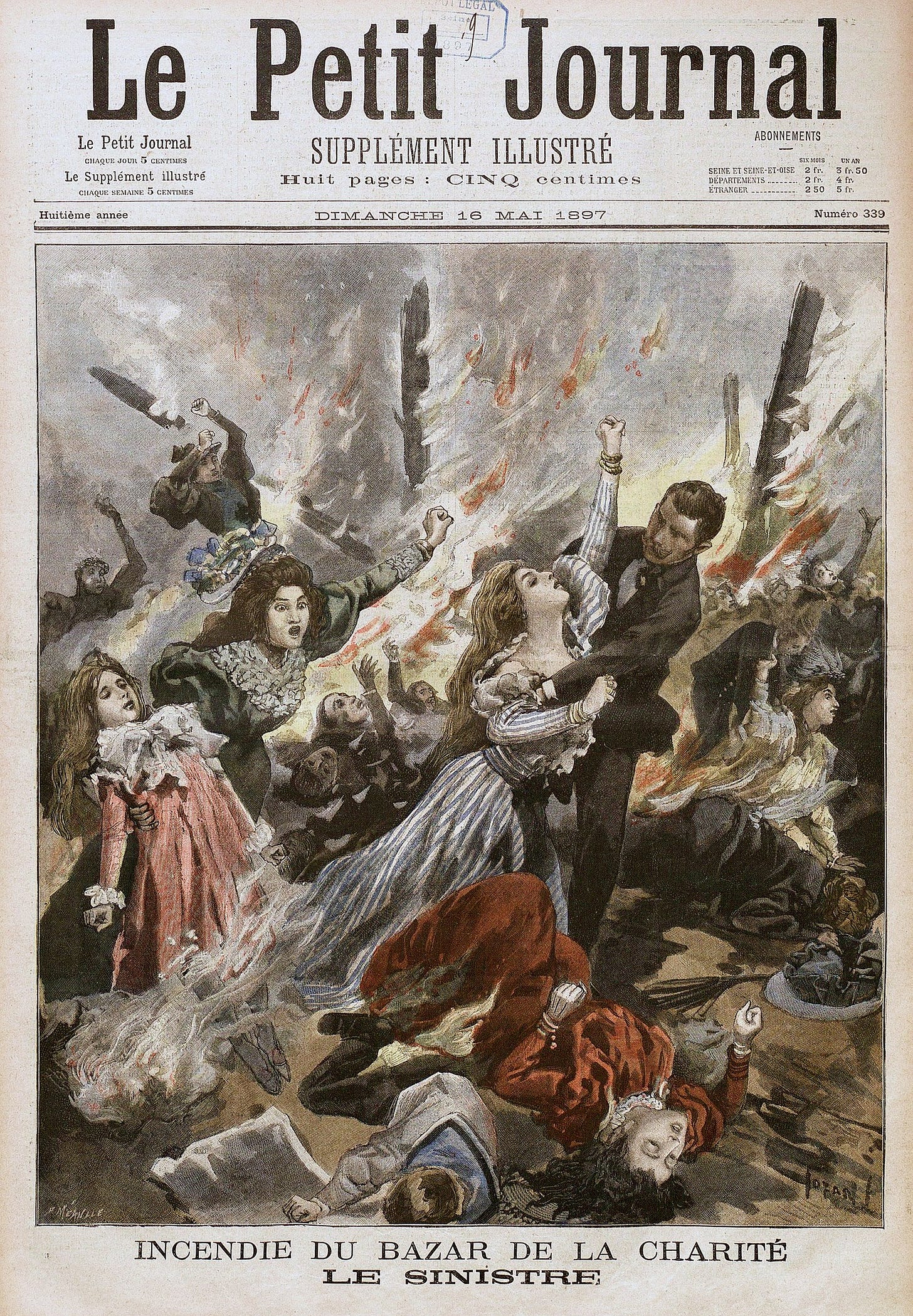Photo taken by Mr. Charles A. Plumer. Presented to the Historical Society by Mrs. Melinda R, Kendrew, James Anderson House, Williamsburg, VA 1961. Compiled by Hazel E. Balch. House is located on Main Street, New Ipswich.
1889
Sept 1908 (fence removed)
The People of New Ipswich
The New Ipswich Historical Society has a large collection of “people” photographs. There are group photos, formal studio portraits and what might be considered snapshots of the day. We’ll feature one or more in this newsletter. Not everyone has been identified, so we’ll appreciate reader input.
Hollis Lougee

On this day - May 5, 1908
James Roger diary entry
5th May 1908 (Tuesday)
Cool but fair. Wind N.E. to E. David at Walker’s till dinner time. Finished hauling wood. Went to Depot in afternoon in afternoon for hall chairs. Got only 7 and step ladder. D. Maynard went with him. Shaw the vet and W Thayer left horse here until they should go to C. Willard’s whose mare was sick and died also the foal. I took 196 chicks out of incubator. John Preston arrived today to set his house in order. I dug place for his sweet peas near Mr. Gordon’s. Peacock commenced his young men’s class tonight in the vestry. Only 4 or 5 present. F. Mansfield called tonight. He has not been very fortunate in his hatch. Miss Goldsmith is getting tombstone erected to memory of her father and mother.
On this day - May 5, 1897
William Jurian Kaula diary - Tragedy
Yesterday afternoon a great disaster fell on Paris. The Grand Charity Bazaar in the Rue Jean-Goujon which runs off the Champs-Elyseés was destroyed by fire at the time when the attendance was most dense, and of the leading fashionable people of the city. So quickly did the fire spread that in a few minutes the building was enveloped in flames. How many have perished in the flames during the stampede after the alarm is not yet ascertained. One hundred and fifteen bodies have already been found and it is probable the list will be larger*. The Bazaar was being held in aid of charity and occupied a temporary building of a construction that is rare in Paris, it was wholly made of wood with a canvas roof. The long building was converted into a medieval street with the stalls representing Old Paris on each side. These were of linen, canvas, or paper. It was being conducted by women of rank and society and the loss to the French aristocracy will be severe. About 4:30 a lamp connected with a cinematograph, exploded, and the alarm was given. There were about 1,200 present at that time. Instantly the flammable material was ablaze and the rush and struggle to escape must have been terrible. The majority knew of only one door, by which they had entered. There was a window and another door. Many escaped into a courtyard that was surrounded by high walls and here many perished as there was no escape from the flames. A window of a neighboring hotel opened on this court and a servant broke away a few bars and rescued about 150 people through the window. The canvas roof fell so soon that it imprisoned many in the Bazaar. Even before that the pieces of burning material was dropping on the heads and dresses of the crowd trying to escape. In a few minutes it was all over even before the fire department had arrived, which was fifteen minutes from the time of the alarm. This was considered good time for the department in Paris. Spectators describe the scene as being most horrible and many that escaped tell stories of the most harrowing incidents of the event. The news of the event spread through the city and especially through the quarter of the Champs-Elyseés and caused much terror and anxiety regarding missing friends and relatives. The fire had soon burned itself out and the firemen, soldiers, and policemen began the work of searching for the bodies. It was not a difficult matter as they lay in heaps many burned and charred beyond recognition. A part of the Palais d'Industrie was converted in a temporary morgue for the purpose of identification. It seems almost incredible that such a calamity could occur in Paris during broad day-light. The tragic horror of the event has made a profound impression and the newspapers have been giving long accounts full of detail. We often think that our American papers devote too much space to disgusting detail but they cannot equal the vivid descriptions of the most shocking kind to be found in the journals in Paris after the fire.
The question of responsibility will probably amount to nothing though it seems that it would have required but little foresight to have discovered that the Bazaar was a perfect fire trap. It seems curious that such a large body of people would be allowed to collect in a building of that kind in Paris where the authorities are very strict as a general rule in watching after the safety of the public. With all the pride that they take in the fireproof construction of the permanent buildings they have much to learn in regard to proper means of escape of the inmates. I have not yet seen a fire escape in Paris. In the Bazaar the doors opened inwards. The small theatres are generally very unsafe as there is apt to be but one stairway to the balconies and but one entrance to the street and not large enough for a rush. Fires are dangerous anywhere but the results are apt to be more serious in Paris than at home. The possibilities of life saving in Paris is reduced to a minimum as there is neither apparatus or men who know much more than to play a hose.
(Diary footnote: The Government held a large memorial service at Notre Dame in sympathy for the unfortunate loss of so many of the illustrious people. The Pope and the Lord Mayor of London were invited to be present and the whole affair was conducted with the pomp and splendor of a French funeral. Cards had been sent to the relations of the dead but as the majority of them are Royalists they took no notice of anything connected with the government. The Republic allows these Royalists free scope for rendering themselves and the monarchy absurd. There are various socialites that meet and dine together when they indulge in a little feeble oratory and insipid poems - May 8
*Per nytimes.com, "Remembering a Belle Époque inferno in Paris", by Mary Blume, April 28, 2008, casualties totaled 126 and the fire was caused by a Molteni ether lamp. Flames spread across the ceiling, hot tar dropped from the roof onto the ground.






Had never heard of that terrible fire in Paris. The account is terrifying.
Cool picture of the stage coach. Any idea what that building is in the background?